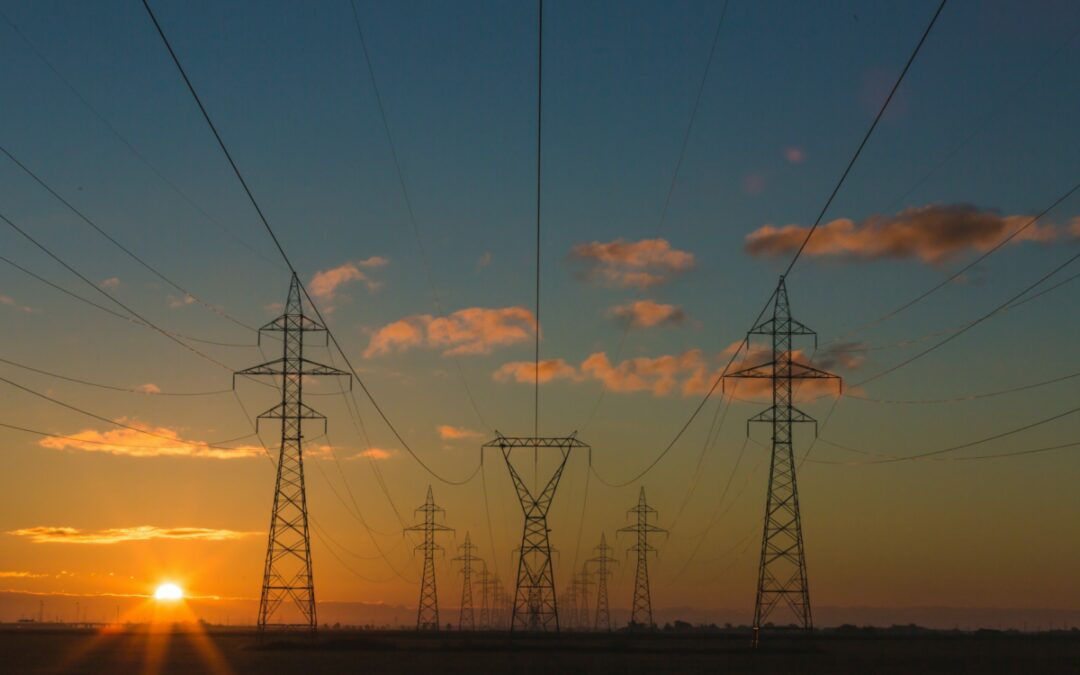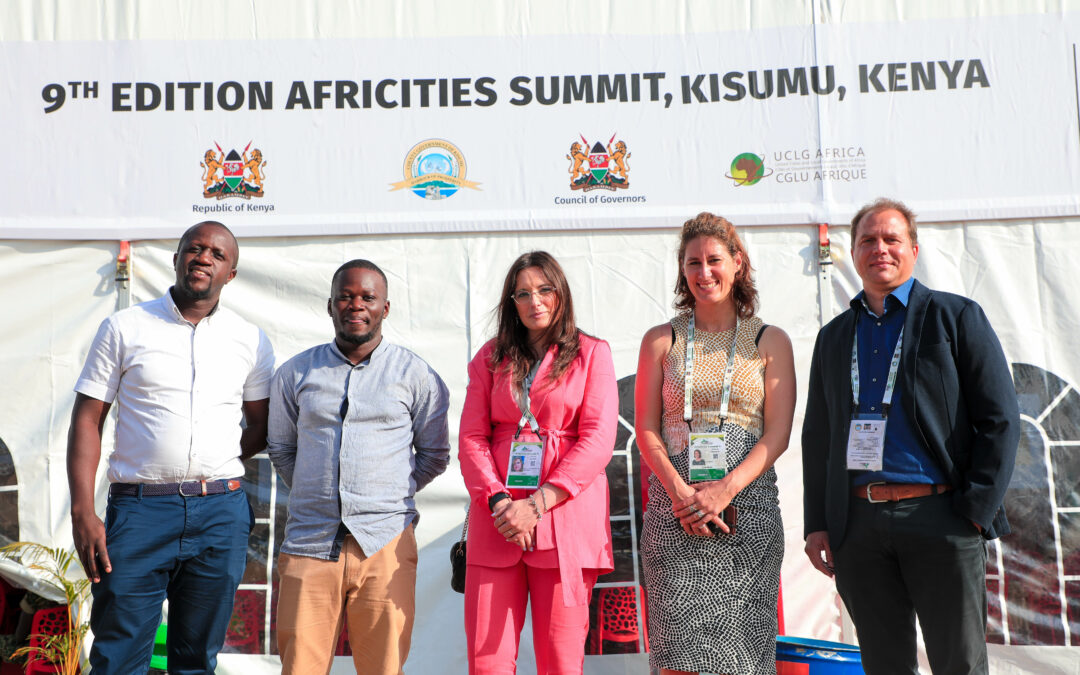By Stefanie Holzwarth from UN-Habitat
The Global Energy Demand
Regardless of the source, energy is a major factor for development. It is needed for transport, industrial and commercial activities, buildings and infrastructure, water distribution, and food production. Most of these activities take place in or around cities, which are on average responsible for more than 75 per cent of a country’s Gross Domestic Product (GDP) and therefore the main engines of global economic growth. To run their activities, cities require an uninterrupted supply of energy. They consume about 75 per cent of global primary energy and emit between 60 and 70 per cent of the world’s total greenhouse gases.
This figure rises to approximately 80 per cent when the indirect emissions generated by urban inhabitants are included. Buildings also consume vast amounts of energy at all stages of their existence. Energy is needed for the raw materials, construction process, and maintenance and daily operational needs such as lighting, air conditioning, heating, cleaning etc. In addition, urban sprawl, increasing distances between destinations, and inefficient public transport systems prompt overall reliance on private motorized transport, such as cars, which have a high energy consumption, mostly of petroleum products.
The global energy mix is still dominated by fossil fuels. They account for more than 80% of energy consumption. Unfortunately, this widespread use of fossil fuels causes a number of challenges. Carbon-based energy generation has a large ecological footprint, not only due to rising greenhouse gas emissions and pollution caused by burning fuels, but also because of extraction techniques that contaminate the environment, and frequent production or delivery accidents.
Furthermore, because of the current mono-dependency on fossil fuels, supply drops or price hikes can easily disrupt economies. Fossil fuels are also all too often a source of regional conflicts and are misused as a means of political pressure. Besides, fossil fuel resources are not infinite, and their depletion is a near reality.
The Challenge
Urban areas require an uninterrupted supply of energy, consuming 75% of global primary energy. While minimizing the ecological footprint of cities, energy distribution needs to become sustainable, more inclusive and fair to foster universal development.
Increasing population growth, urbanization and expanding economic development are putting pressure on limited energy which annual demand growth is around 7 % in developing countries, while the supply remains stable. Hence a mismatch between the supply and demand and frequent power rationing in cities. Significant amount of energy is also wasted daily in different sectors: building, transport, industries etc.
The situation in African cities
African cities lack sufficient access to energy. The growing energy demand, due to population growth and rapid urbanization, has not been addressed adequately. Although governments have invested considerably in the energy generation sectors, these efforts remain limited and insufficient. African cities need more energy to develop and diversify its economic. Most of the urban dwellers – living in informal settlements – are consider energy poor. In fact, they spent a big share of their income (more than 10 %) on energy services.
African cities need to promote energy demand management in all the sectors. Modern buildings in Africa consume more than 54 % of total national energy. Most of this energy is wasted due to the poor building design that is not adapted to the tropical climate. It is therefore important to design buildings with bioclimatic architecture principles. Priorities should be given to activities and appliances that consume less energy to promote the transition towards Net Zero Carbon.
Strategies for improving the urban energy situation
A sustainable urban energy system will need low carbon technologies on the supply side, and efficient distribution infrastructure as well as lowered consumption on the end-user side. Cities therefore need to shift from the current unsustainable fossil fuel energy generation towards using renewable energy sources, not only because of looming resource depletion but also to curb the negative externalities such as pollution and greenhouse gas emissions. At the same time, energy consumption must be reduced by changing consumption patterns and adopting energy saving techniques.
Lastly, because energy is paramount to revenue generation, its distribution needs to become more inclusive and fair to foster universal development, especially for the urban poor. Although renewable energy technologies (RET) such as wind, water, solar, and geothermal are becoming more accessible — and already cover the energy demands of some neighbourhoods if not whole cities in certain areas — intermittence of supply and high upfront costs are the main deterrents of a wider adoption. Nevertheless, benefits in the long run will outweigh the initial challenges, both from an environmental and economic perspective.
For instance, once a renewable energy generation system is in place, future running costs are usually very low due to an inexpensive and abundant supply of the energy source. Cities also need to assess their meteorological and geographical specificities to best transform the surrounding natural resources into power. To tackle intermittency, several renewable energy sources should be combined to overcome source-specific shortages, such as solar at night, or wind during doldrums. Solutions can also come from waste and heat recovery technologies that can be used to bridge supply gaps.
Smart grids – electric grids that harmonize supply and demand – provide another solution for the intermittent power supply by helping to balance variable power generation and end-user needs. These grids are also more efficient in transmission and distribution, thus reducing energy loss. Machine shifts can be automated to run during hours of the day when there is enough power to meet demand.
Lowering energy consumption
The major change, however, needs to come from the end-users – residents, businesses, industries – who must control their consumption. The less energy that is used, the less needs to be produced. Technology can also assist in optimizing energy use. Smart grids can be paired with smart appliances or even a whole smart home or building, which respond to varying electricity supply and prices.
Households, offices, and factories can program smart metres to operate certain appliances when power supplies are plentiful. For example, a washing machine can be set up in such a way that it will only start operating when there is enough power in the grid or when the price is under a certain threshold. Buildings themselves have huge energy saving potential if they embrace green or low-energy building concepts and passive design principles.
Savings can be made by integrating efficient heating, cooling, insulation, lighting, and water distribution systems in new or rehabilitated buildings that will increase energy retention.
Likewise, on site alternative energy sources such as solar panels on a roof can supplement power from the grid. The use of recycled, reused, or low energy building materials will also contribute to a better energy balance.
To cut fossil fuel use for transportation needs, cities need to develop attractive public transport systems and must increase the share of non-motorized transport in developing specific infrastructure (such as cycling lanes and walkways), and optimize delivery of goods, (for instance by promoting the use of rail for cargo transport).
Cities can also opt to introduce electric mobility to lower their emissions from transport. However, for cities to fully benefit from the transition to electric mobility, these efforts need to be implemented in the overall context of better and more compact urban planning with a focus on accessibility and urban liveability.
This will require close collaboration between public and private actors in which governments can bring forward enabling regulatory frameworks and provide incentives to encourage the uptake of electric mobility.
Food production and water distribution are huge energy consumers. Curbing food and water waste will therefore also contribute to lowering overall energy use. Besides reducing energy on the production and delivery side, cities also need to promote urban agriculture, such as rooftop farming (it is estimated that 30% of urban spaces could be covered).
Consumption habits need to change, residents should be encouraged to use more local produce and to take on prosumption, the production of one’s own food. The same reasoning can be extended to consumption habits in general, with residents adopting more sustainable consumption habits and recycling concepts.
Cities need to ensure that industries pool their resources in order to create synergy effects. This can be achieved by establishing eco-industrial parks, where waste and by-products of one industry serves as the raw material of another, thereby improving material and energy efficiency and decreasing environmental emissions. From an economic perspective, this would also make companies more competitive, as better waste management results in cost savings and a higher environmental and business performance.
Governments as regulators and drivers of change
Cities need to establish strong policies and standards to develop sustainable urban energy systems and to reduce the use of unsustainable technologies and practices. Governments must not only institute legislation to regulate energy use and consumption, but must also set up incentive measures that promote research, innovation, and, most importantly, the adoption of greener and more efficient technologies.
Sound collaboration and mutual understanding between the private sector — which runs most of the world’s energy systems — and overseeing authorities is therefore paramount for short-term commercial interests not to overshadow long-term environmental concerns and sustainable development opportunities.
Governments should also pursue collaboration between local and international partners in order to enable local companies to strengthen their knowledge, expertise, and market reach.
Governments of developing countries should consider private-public partnerships to develop their energy systems, as current costs cannot be carried by a country alone.
For each city to be able to adapt to its own local particularities, authorities need to design decentralised energy systems and infrastructure, and also be permitted to have specific legislation and tax systems to either promote the use of sustainable energy, or to curb and dissuade the use of polluting, inefficient technologies and consumption habits.












Recent Comments